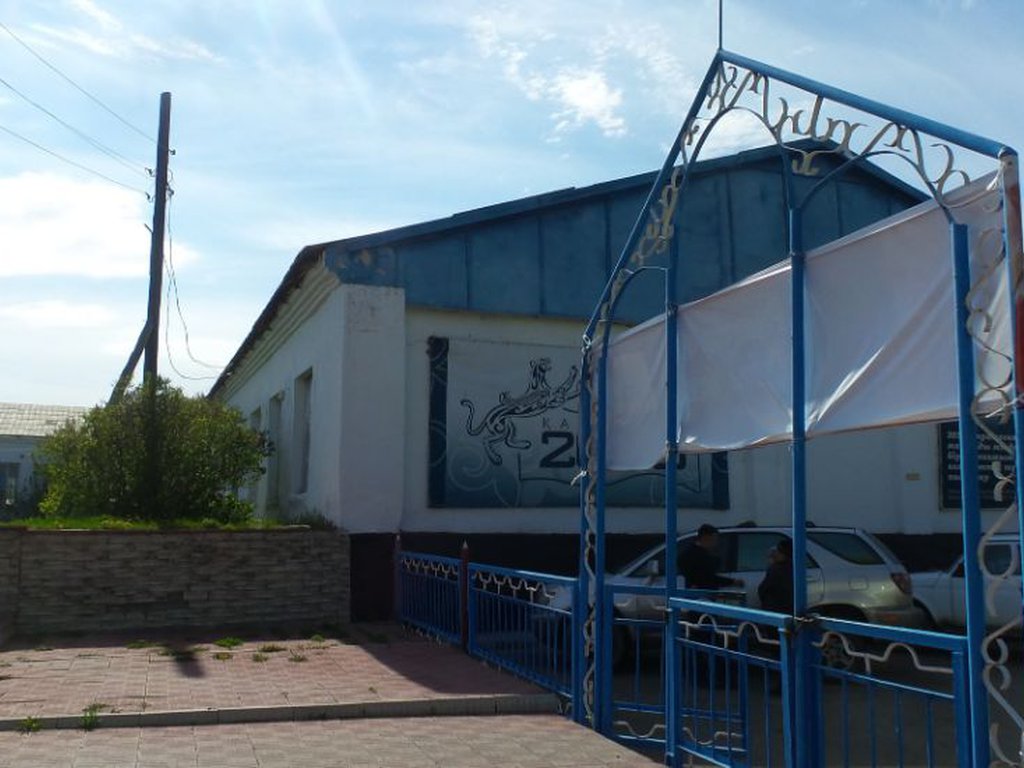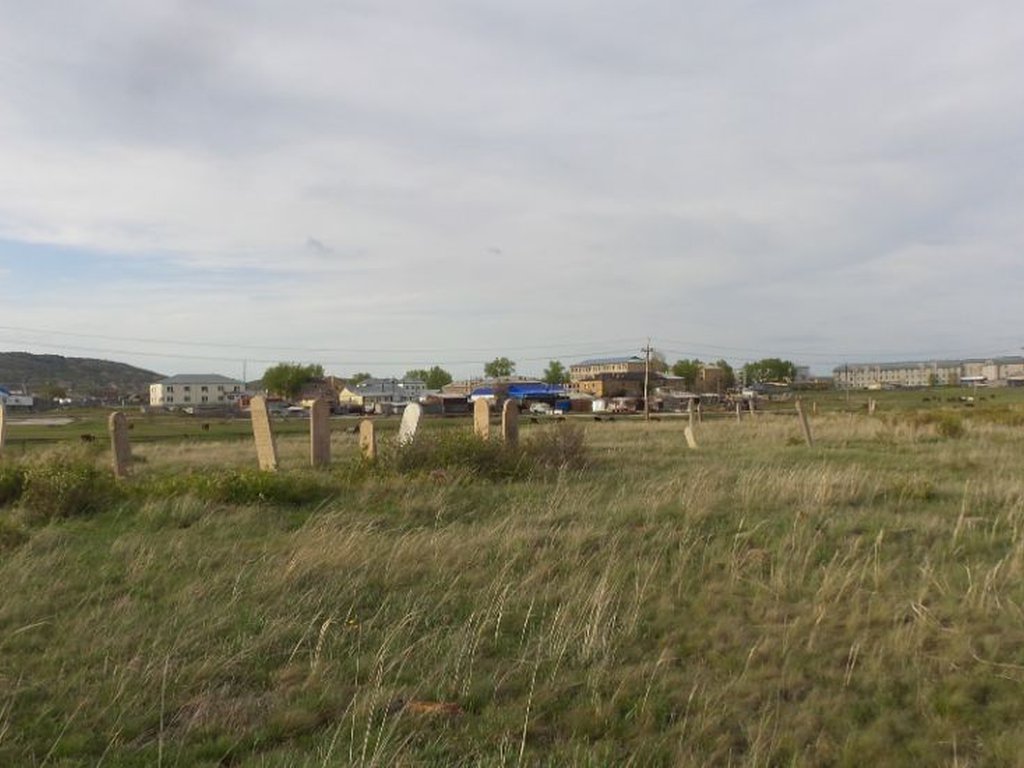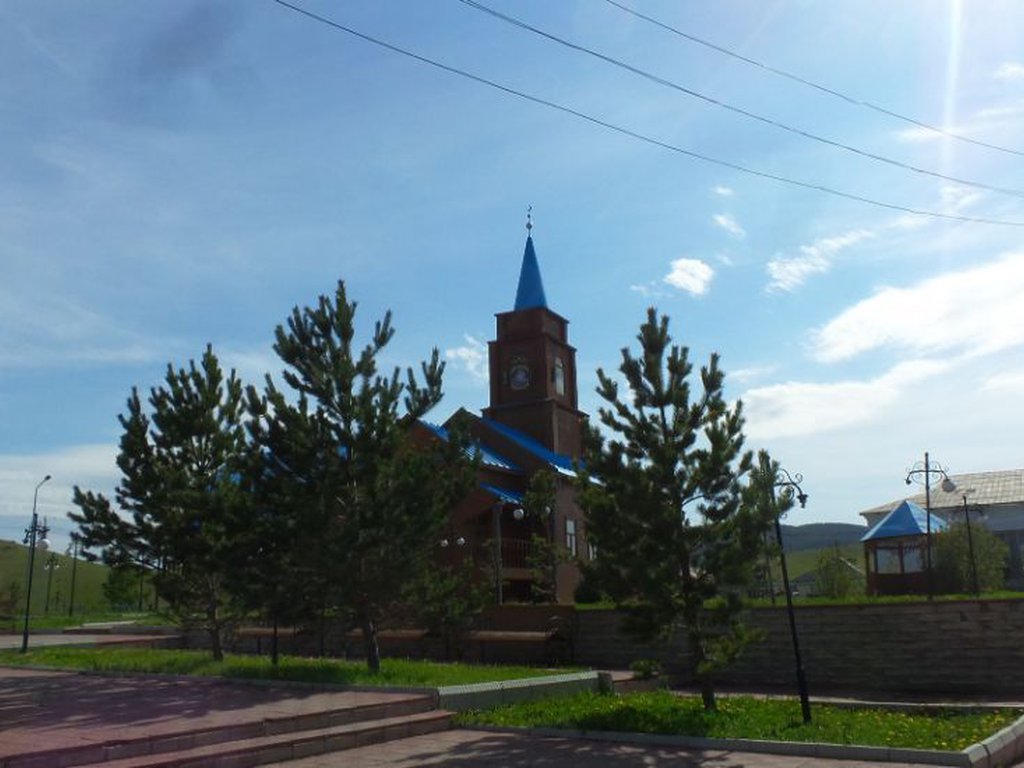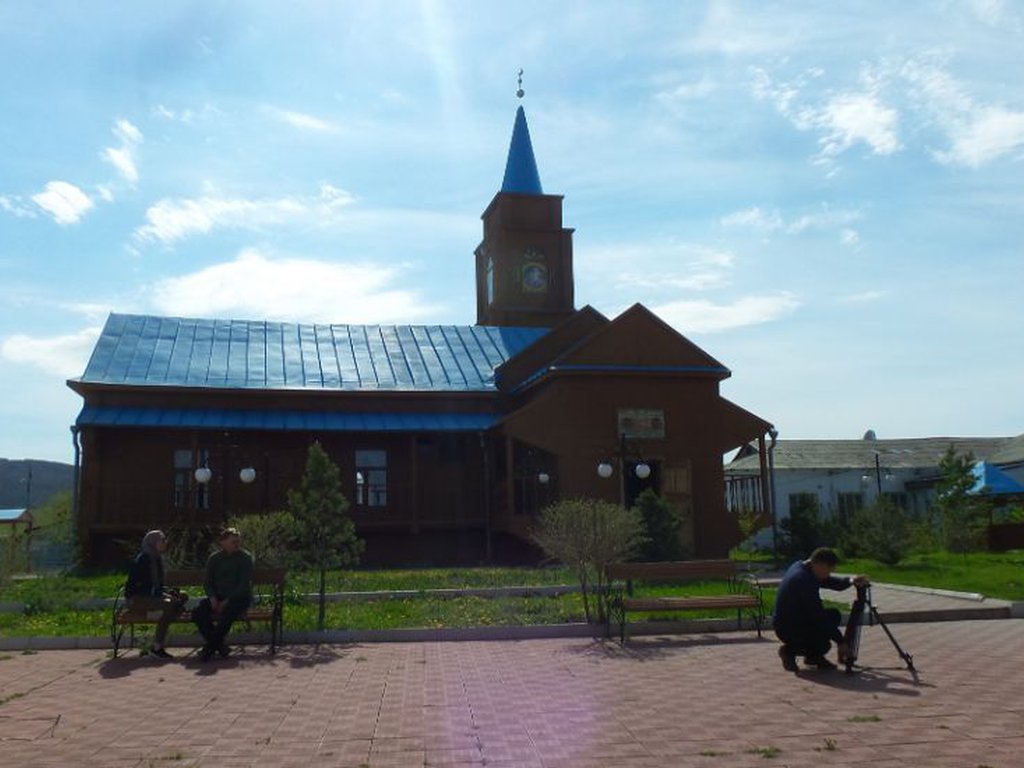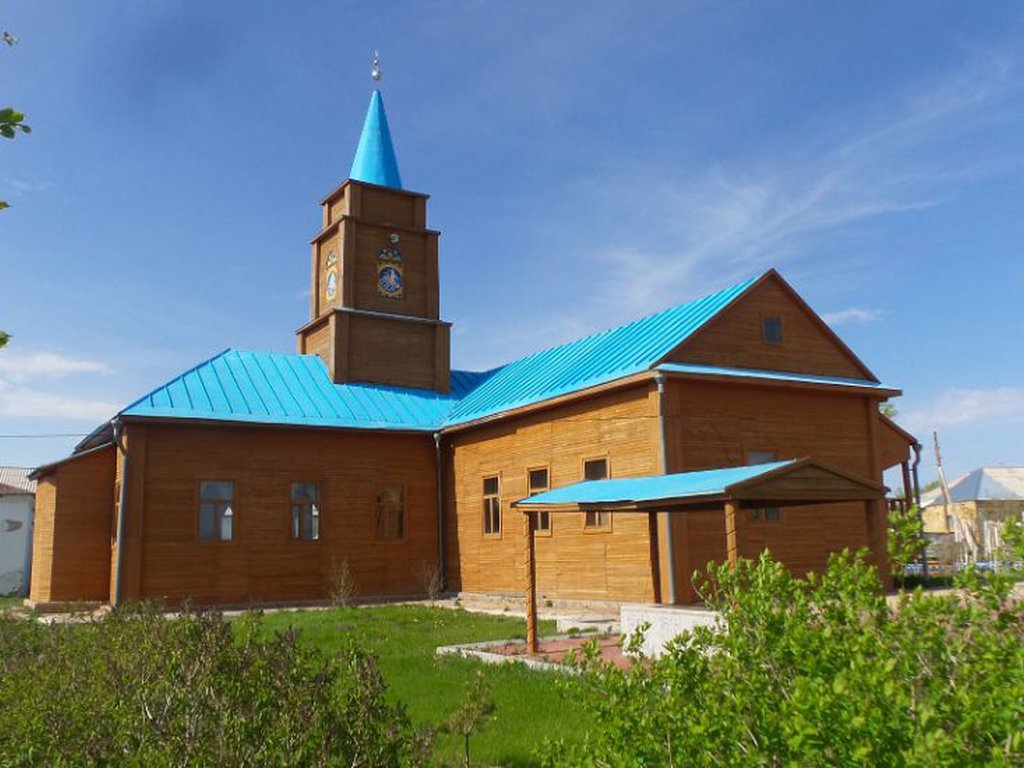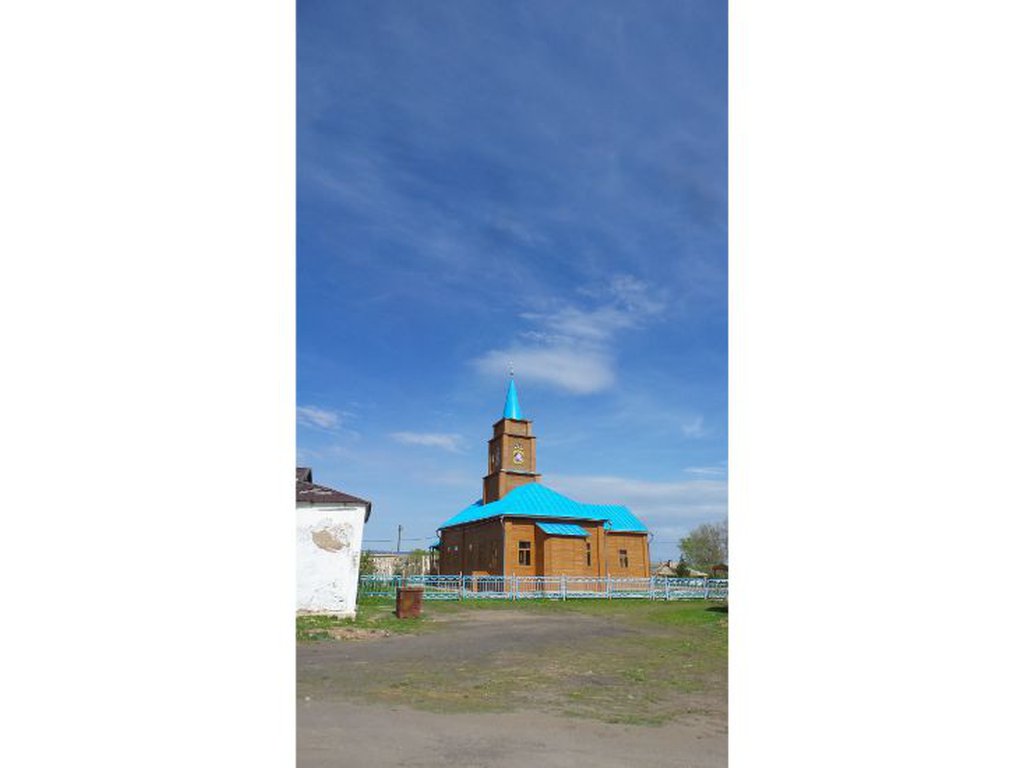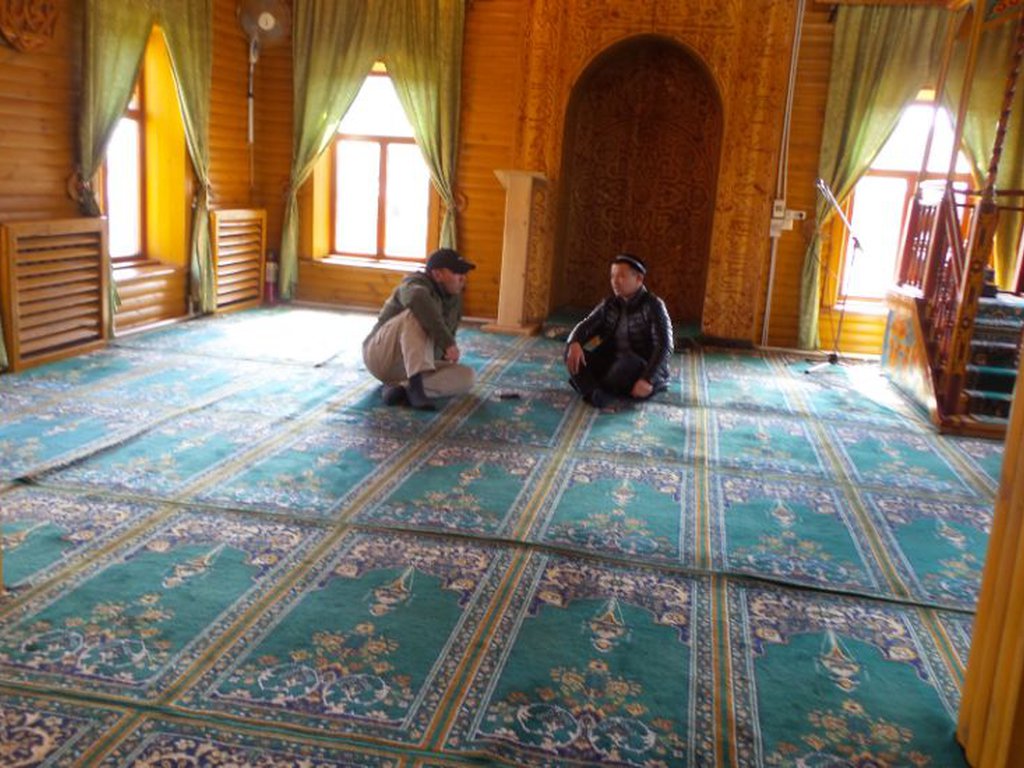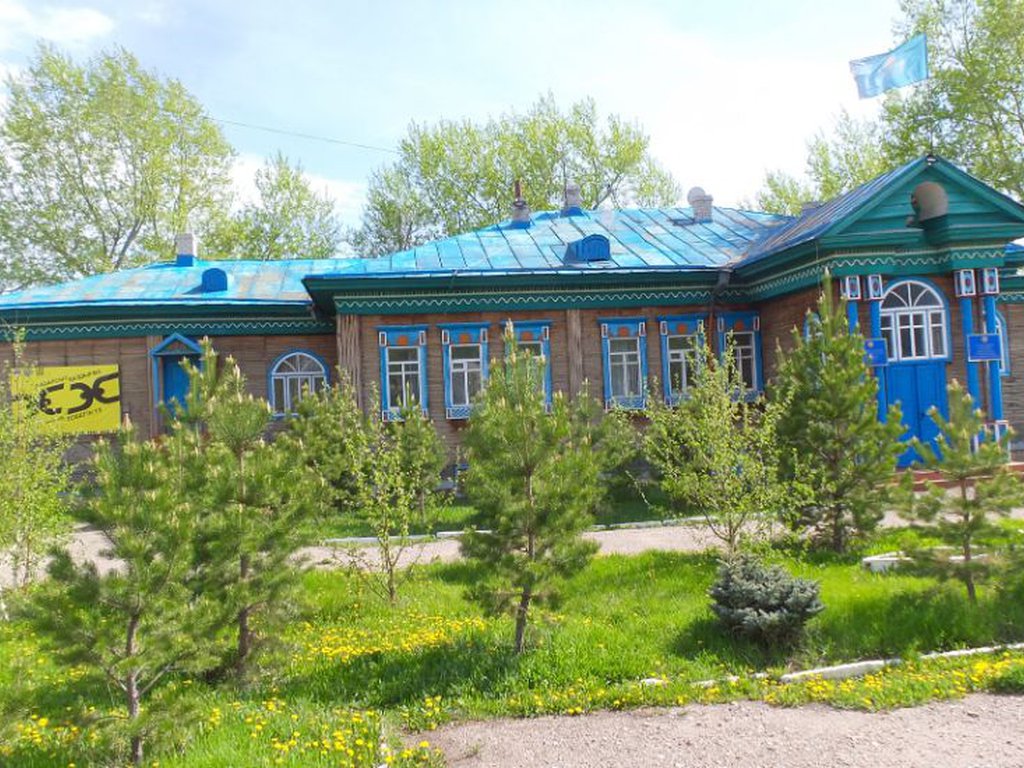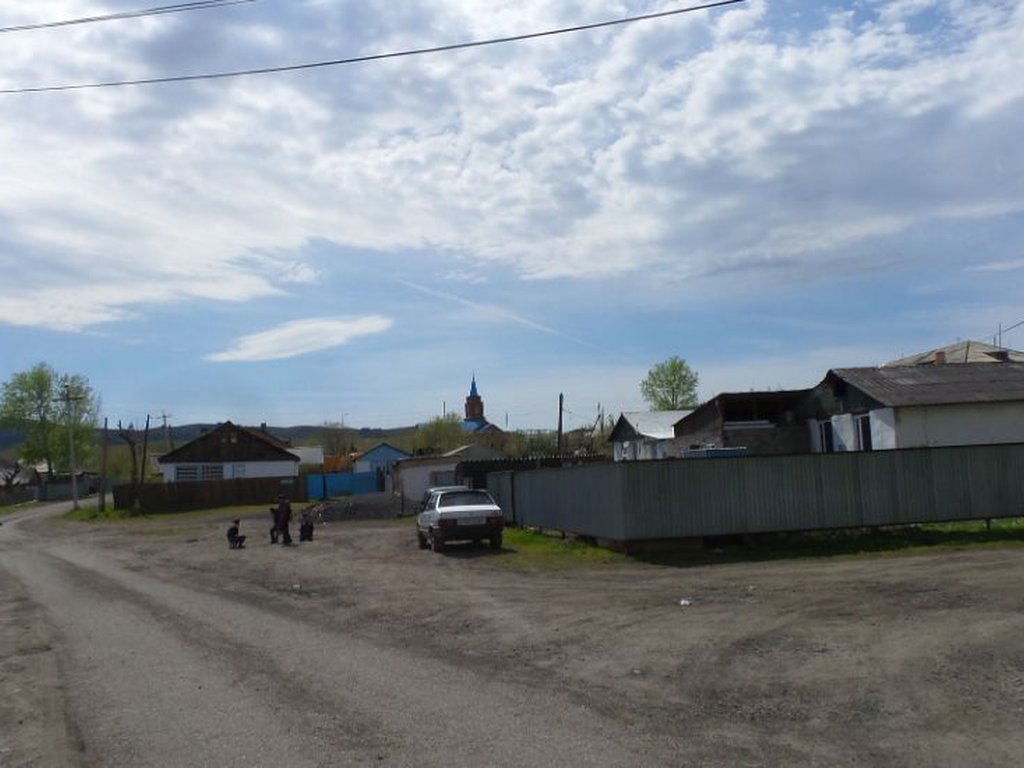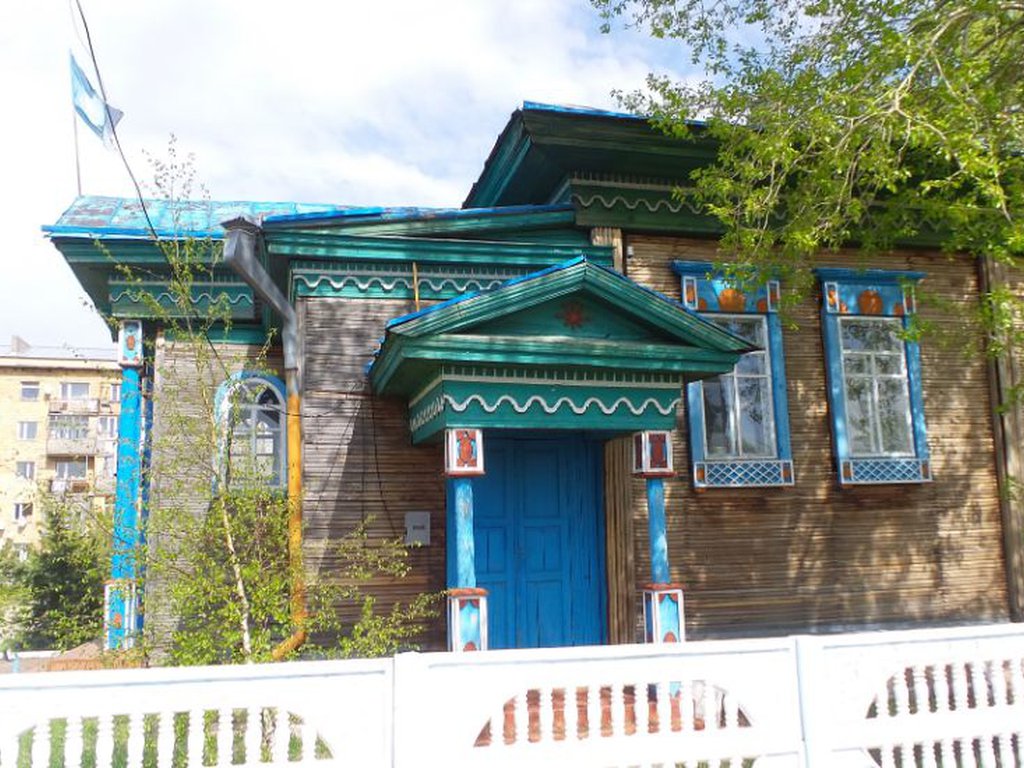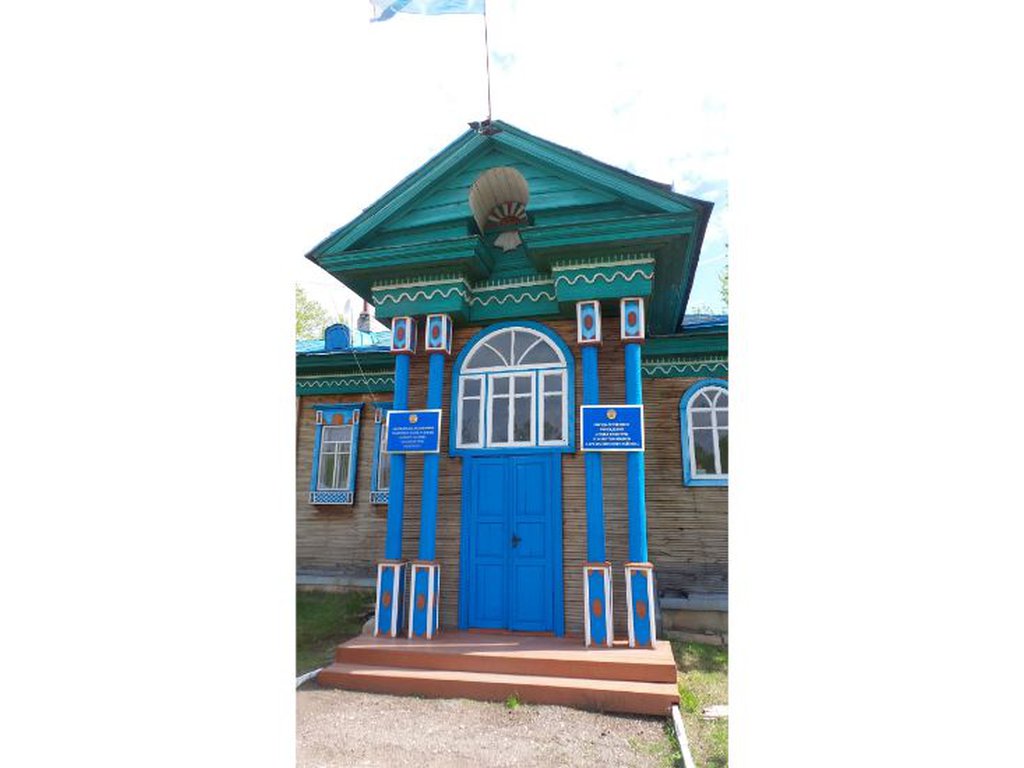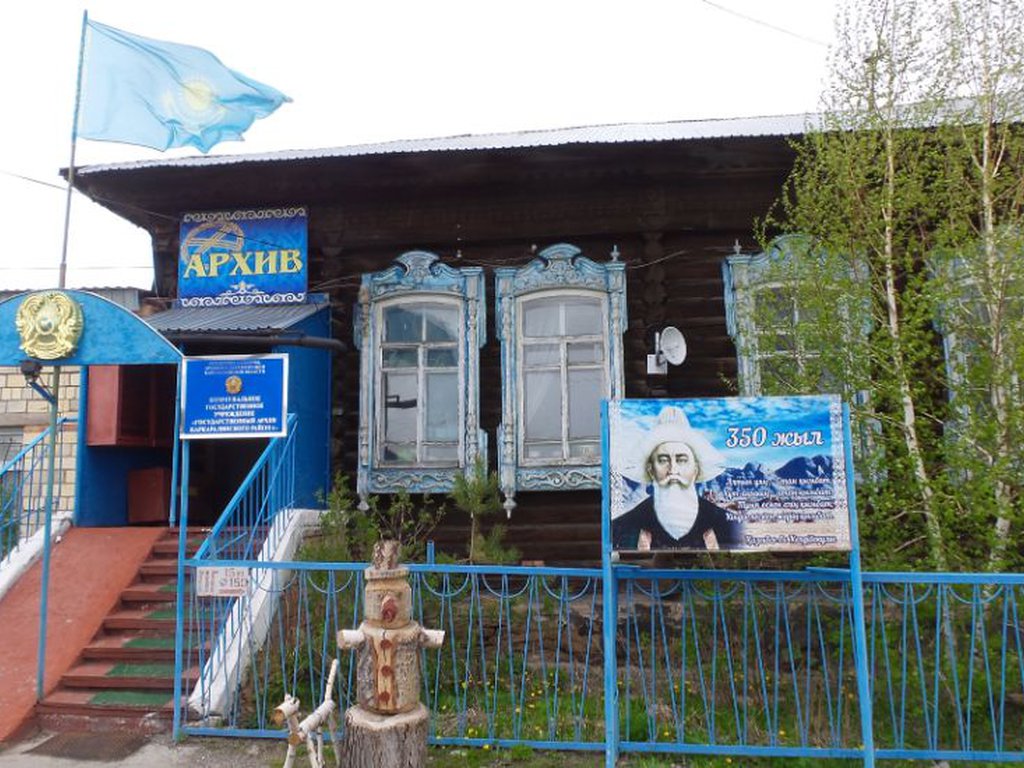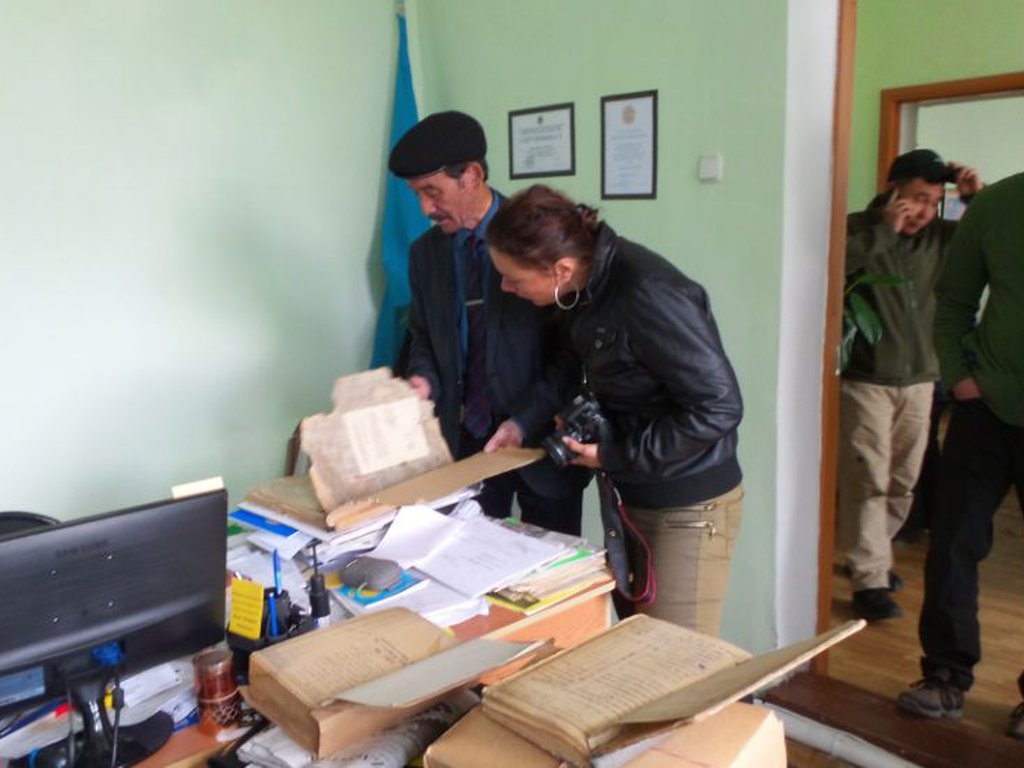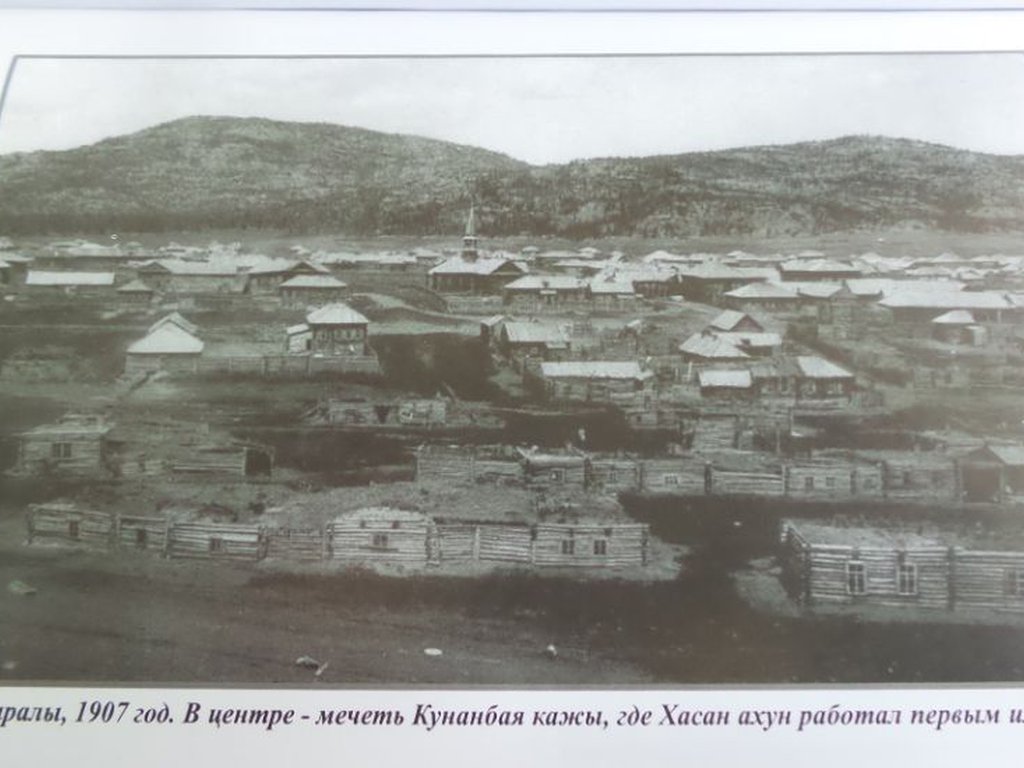Kunanbai Mosque. Паспорт объекта

Full description
Time and circumstances of foundation: According to the work of Karkaraly’s local historian E. Mustafin, the history of the mosque dates back to September 5, 1847, when the first discussion of the construction of a mosque in the Karakaraly district order took place. The discussion was headed by the senior sultan of the Chingizid district, Major Kusbek Taukin. Kunanbay Oskenbayuly was also present at the meeting. Kusbek Taukin and Kunanbai Oskenbaev are the most important historical figures with whom the history of the construction of this mosque is associated.
Kunanbai Oskenbayuly, or Oskenbayev, is a well-known historical figure in the colonial history of Kazakhstan. Kunanbai’s origin was Tobykty clan of the Argyn tribe. He was a very wealthy cattle owner, a judge (bi), a tribal leader, a foreman of the Kushik-Tobykta volost, had the rank of cornet and held the high position of an aga-sultan or senior sultan of the Karkaraly district from the end of 1840 (Kasymbaev, 2004). According to N. Nurtazina, Kazakh biys in their court decisions often appealed to the norms of Sharia (Nurtazina, 2000 275). Adolf Yanushkevich (1803-1857), who personally met Kunanbai during his travels, wrote that Kunanbai also easily quoted Sharia norms when deciding court cases (Yanushkevich, 2007, 249).
Kunanbai played an important role in initiating the project, and then in the construction of the mosque. Kunanbai can be considered as one of the leaders of the Islamization of the steppe Kazakhstan. Mustafin writes that in the list of founders of the mosque, the name of Kunabai comes second after the eldest, Sultan Taukin (Mustafin 2017, 20). During the discussion of the construction of the mosque, it was decided to request from people donations for the construction and to establish a laced book to record the funds received from the population. But the initiative of the steppe elite had only a recommendatory character and required permission from the colonial administration. In general, the construction process of the mosque was complicated. For example, it was necessary to obtain a resolution from a specialist engineer. A positive resolution and a draft drawing of the mosque were made by some engineer from the captain’s rank. According to the bureaucratic requirements, the plan-drawing had to be approved first by the head of the Siberian border directorate, Major General N.F. Vishnevsky, and then the approval of the Governor-General of Western Siberia P. D. Gorchakov. The Governor-General's permission to build the mosque outside the fortification was received on October 22, 1847. A few days later, Vishnevsky N.F. ordered the Karkaraly order to choose a place for the construction of the mosque, taking into account the opinion of Major K. Taukin and other honorary representatives. On November 28, 1847, the District Order sent a report to the Border Board, where it was reported that the site had been selected in the presence of the senior sultan and other officials. The site of the mosque was, as ordered, outside the Karkaraly fortification, a distance apart from it. The Kazakh steppe aristocracy and influential figures headed by K. Taukin and K. Oskenbaev signed an act on December 12, 1847, prepared earlier on September 5, which clarified the articles of financing the construction and election of financial trustees from local Kazakhs, such as Karzhaubay Itkarin and Sargyz Dogalov. The beginning of the mosque construction was planned for the spring of 1847, but since there were not enough civilian workers, on December 15, 1847, the district order requested the Border Administration the allocation of regular troop soldiers for the payment prescribed by law. On March 29, 1848 “... Prince P.D. Gorchakov and the chief of staff of the separate Siberian corps, Major General Zhemchuzhnikov, informed General N. F. Vishnevsky about the satisfaction of the district order's petition to use regular troop soldiers for the rough work ... "(Mustafin 2017, 26).
However, the construction of the mosque was not started either in 1848 or 1849, or even in the first half of 1850. One of the reasons was the change of the head of the district order K. Taukin. Taukin was replaced by Kunanabai, which was unusual for traditions of that period, since Oskenbaev was not a Chingizid. Kunanbai was the first so-called "black bone" agha-sultan of his period. On November 11, 1849, an order was issued to approve Kunanbai for the post of senior sultan (aga-sultan). In January 1850, Kunanbai wrote to the new chief of the border service, Colonel Kleist, confirming his responsibility for the construction of the mosque. In his three-page letter to Kleist, Kunanbai talks about the benefits of the mosque for the "morality of the people," and takes responsibility for its construction, although he criticizes the choice of location made by Taukin and Gorchakov. Kunanbai considered that this place was unsuitable due to its too close location to the grocery store. Kunanbai believed that the mosque should have built with a free space around it for the construction of private houses and auxiliary premises. Kunanbai wanted mullahs, imams and other believers from among the Kazakh and Tatar merchants and representatives of the nobility to settle near the mosque and form a Muslim settlement, which is quite typical for the Muslim communities of Tsarist Russia. Kunanbai asked for permission to cut forests for residential premises and asked to place the mosque below the Karkaralinsk fortress at a distance of one verst from the Semipalatinsk tract, where a private settlement could freely accommodate.
On January 30, 1850, Kleist sent a letter in which he gave permission to cut wood for residential buildings and the mosque and to build the mosque. On January 20, 1851, permission was obtained to build premises for mullahs and an educational institution. Kunanbai also wanted to build a separate house for himself near the mosque, for which he received permission on February 26. On August 15, 1851, Kunanbai informed the colonial administration that the construction of the mosque in the village of Karkaraly was completed.
Period of use: The mosque functioned as a religious building since its construction in 1851. The first imam of the mosque was the Tatar cleric Hasan Sayfulla (Seifullin) Sarataui (from Saratov, died in 1881) (Khalidi, 1992, 164). Kurban Ali Khalidi in his work Tauarikh Khamsa, published in 1910 in Kazan, writes that Imam Khasan held this position until 1869, since in that very year the Russian administration forbade Nogai or Tatar mullahs to hold religious positions among Kazakhs (Khalidi, 1992 , 164). In the novel "The path of Abai" by M. Auezov, Hasan Seifullin or Hasan Akhun is mentioned occasionally under the name of Mullah Khasen (Auezov, 1978). Auezov's novel "The path of Abai" is very important as an interesting ethnographic and historical source about Kazakhs, which contains information about reactions of the population to the construction of the mosque. Despite the Soviet censorship, Auezov showed that the construction of the mosque was an important and anticipated event for Muslim community in the Karkaraly district. Kunanabai, as shown in the novel, in the spirit of Muslim traditions, made a big feast or ‘as’ in honor of the opening of the mosque, in which many representatives of the Kazakh and Tatar elites participated. Support for the construction of the mosque was an important symbol of the consolidation of Muslim religiosity among the steppe population (Nurtazina, 2000: 226; Privrtasky, 2001).
In addition, according to archival data (CSA RK. F. 345. Op.1. D. 916a. L. 133-135) at the mosque in 1865 there was a school for Tatar and Kazakh children. The school was run by the parishioners. Mustafin also cites the memories of local old-timers (for example, Kadisha Tusip Kozhakyzy 1922-2003) that the madrasah functioned in the early Soviet period. In 1927 religious figures from Tashkent visited madrasah. In 1932, the madrasah was dismantled and put on firewood (Mustafin 2017, 57). Hasan-akhun was the imam of the mosque until 1869. He and other imams could own a rich library, since Karkaraly until the 20-30s of XX century was one of the important economic and political centers of the Kazakh steppe. Unfortunately, the mosque's library has not survived. Metric books of the mosque were transferred to the archives of Ufa by the last imam of the mosque, Oralbek. E. Mustafin has copies of births registers. The mosque functioned until 1928 and was closed during the Soviet persecution of religion. According to an interview with Erlan Mustafin, the original crescent moon from the Kunanbai mosque is kept in his collection.
Main functions: The mosque was the religious center of the Karkaraly district. From the moment of construction and at least until the end of the XIX century, it was practically the only mosque with a madrasah in the district. In 1907, the Muslims of Karkaralinsk received permission to build another mosque - the so-called "Tatar" mosque; now there is a Russian school on its site (Mustafin 2017, 114). After the closure of the Kunanbai Mosque in 1928, the building was used as a library, school, warehouse, then as a stable and cattle corral, and by the end of the 1980s it was in a deplorable state. The modern Kunanbai Mosque is a new building, rebuilt close to the historical original, but the original walls and building materials have been lost.
Nowadays, the process of sacralization of the mosque is holding on, and a sacred narrative about the sanctity of this place is being formed (https://ru.egemen.kz/article/191324-gde-starinnyy-polumesyats-mecheti-kunanbaya). Ethnographic data indicates the construction of myths: for example, workers could not live and work in this mosque during the Soviet period, or when the crescent moon was knocked down from a minaret in the early Soviet period, the person who committed this act was punished to death, etc. At the moment, the Kunanbai Mosque is honored and respected as a symbolic memory of Kunanbai Uskenbayev and the Islamization of the region.
Religious affiliation: Sunni Islam, Hanafi madhhab
Plan: Kunanbai Mosque consists of two parts: the main building built of a wooden beam with a mehrab (a niche in the wall of the mosque indicating the direction of Mecca) and the entrance hall adjacent to the mosque. The minaret of the mosque is also made from wood. The roof of the main building of the mosque and the minaret is made of sheet metal roofing and covered with blue paint. There are also two terraces adjacent to the mosque. The area around the mosque is covered with paving stones; there are also lawns and a fence. There are carpets inside the mosque. This mosque is not the original building which was built with the participation of Kunanbai in 1853, but a modern reconstruction.
Other sites: Kunanbai's house is also located in Karkaralinsk. In 1851, Kunanbai applied for the construction of a house for personal use near the mosque, which indicates the important symbolic role of the latter. In the same year, his request was granted and he built a spacious house with an iron roof. In the novel "The path of Abai" by M. Auezov, this house is mentioned several times as the residence of the aga-sultan, where Kunanbai met with influential nobility and merchants of the Karkarali district and lived during visits.
Road: From Karaganda to Karkaraly (200 km) the asphalt road is in satisfactory condition.
Recommended sources:
1) Ауэзов М. Путь Абая. Алматы, Жазушы, 1978. 332 с.
1) Касымбаев, Ж. Старший султан Кунанбай Оскенбаев и его окружение: посвящается 200-летию со дня рождения Кунанбая Оскенбаева. Изд. 2-е, перераб. Алматы, Кітап, 2004. 208 с.
2) Нуртазина Н. Ислам в истории средневекового Казахстана. Алматы: Фараб, 2000. 309 с.
3) Мустафин Е. Oб имаме Хасан Ахуне – Караганда: Арко, 2017. 160 с.
4) Халиди К. Тауарих Хамса. Алматы, 1992 . 304 с.
5) Янушкевич А. Дневники и письма из путешествий по киргизским степям. (Библиотека казахской этнографии, Т. 29, /Павлодар: Эко, 2007. 390 с.
На английском языке:
Privratsky B. Muslim Turkistan: Kazak Religion and Collective Memory. Psychology Press, 2001. 321 p.
Internet Sources:
Мирас А. Где старинный полумесяц мечети Кунанбая?
https://ru.egemen.kz/article/191324-gde-starinnyy-polumesyats-mecheti-kunanbaya
Photo gallery
Map


